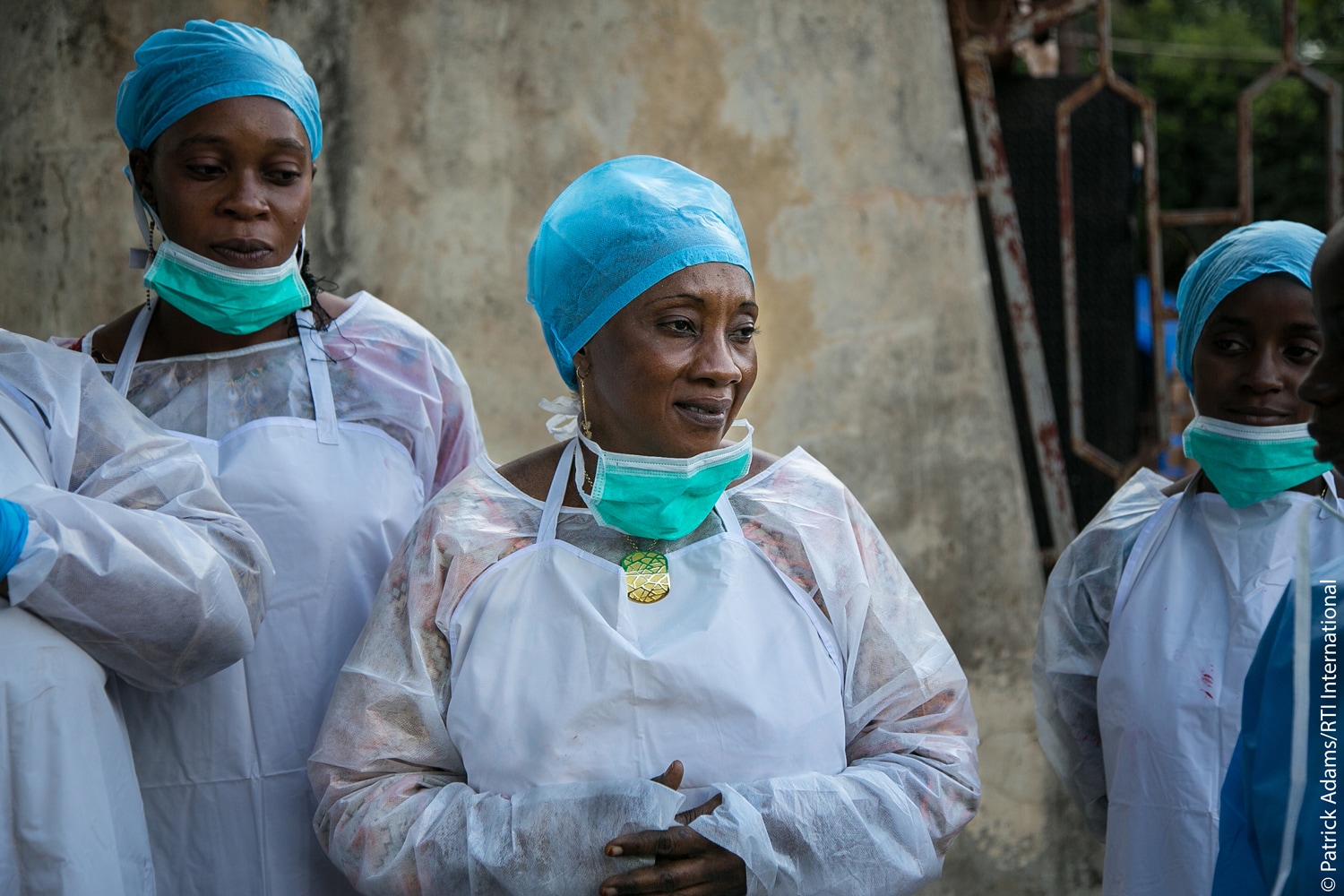At a glance
CDC established its office in Guinea in 2015 to strengthen national public health systems and enhance the country’s capacity to prevent, detect, and respond to infectious disease threats. Working in close partnership with the Ministry of Health (MOH), the National Agency for Health Security (ANSS), and other national and international partners, CDC Guinea supports efforts to build resilient surveillance systems, expand the skilled public health workforce, and advance global health security and epidemic preparedness across all levels of the health system. CDC’s work aims to protect the health of Americans and support public health around the world.

Key accomplishments

- Strengthened infectious disease surveillance and outbreak response by supporting the ANSS to implement the 7-1-7 approach and enhance real-time data reporting through the District Health Information System (DHIS2)
- Expanded workforce capacity through the Field Epidemiology Training Program, training epidemiologists on the One Health approach for professionals from the human, animal, and environmental health sectors
- Improved laboratory systems by providing technical assistance for biosafety, diagnostic capacity, and quality assurance through the Global Laboratory Leadership Program and national specimen referral policy implementation
- Strengthened immunization and disease control efforts through the Expanded Program on Immunization, supporting measles, polio, meningitis, and yellow fever surveillance and vaccination campaigns
- Enhanced national emergency preparedness and response capacity through the Public Health Emergency Management program, strengthening Public Health Emergency Operations Centers and Rapid Intervention Teams across all 38 districts
- Advanced cross-sectoral collaboration integrating human, animal, and environmental surveillance systems to prevent and control zoonotic diseases such as rabies and anthrax
Global health security
CDC’s global health security work in Guinea focuses on strengthening the country’s capacity to prevent, detect, and respond to infectious disease threats. In partnership with the MOH and other national and international partners. CDC Guinea supports integrated surveillance systems, laboratory networks, workforce development, emergency management, and immunization programs that collectively enhance national and global health security.
Health systems strengthening
CDC provides technical and financial support to strengthen Guinea’s Integrated Disease Surveillance and Response system. This includes integrating Event-Based Surveillance into the District Health Information System (DHIS2) and EMPRES-i platforms, improving early warning and rapid response capabilities. Through collaboration with ANSS, CDC has helped operationalize a multi-tiered surveillance structure with Rapid Response Teams (EPARE and ERARE) and Emergency Operations Centers across all levels. These efforts improve data reporting, analysis, and decision-making through the National Health Information System.
Workforce development
Since 2016, CDC has supported Guinea’s Field Epidemiology Training Program (FETP), which builds critical workforce capacity for outbreak investigation and disease surveillance. To date, more than 400 public health professionals have graduated across the frontline, intermediate, and advanced levels. Over 80% remain active in country, applying their skills in managing public health emergencies such as Ebola, Marburg virus disease, COVID-19, yellow fever, and polio. The FETP follows a learning-through-service model that emphasizes field practice, mentorship, and One Health collaboration across human, animal, and environmental health sectors.
Laboratory systems strengthening
CDC collaborates with the National Institute of Public Health and National Directorate of Laboratories to strengthen Guinea’s diagnostic capacity. Key achievements include integrating LabBook with DHIS2 for real-time laboratory data management, launching a Global Laboratory Leadership Program in Guinea, and enhancing testing capacity for Ebola, monkeypox, COVID-19, meningitis, rotavirus, influenza, and other priority diseases. These initiatives have improved biosafety/biosecurity, quality assurance, and coordination between national and regional laboratories.
Emergency management
CDC helped establish Guinea’s first Public Health Emergency Operations Center, now operational in all 38 districts. CDC continues to strengthen emergency preparedness through the Public Health Emergency Management program. This collaboration supports training, simulation exercises, with standardized operating procedures to ensure coordinated response to health emergencies.
Immunization
CDC supports Guinea’s Expanded Program on Immunization to increase vaccine coverage and strengthen surveillance for measles, polio, yellow fever, and Meningitis A. Through the deployment of FETP-trained epidemiologists and STOP Program officers, CDC enhances campaign planning, monitoring, and data analysis. CDC also provides technical support for the introduction of the rotavirus vaccine and promotes the Second Year of Life (2YL) policy to improve measles immunity and sustain high vaccination coverage.
One Health and Zoonotic Disease Control
In coordination with the Ministries of Health, Livestock, and Environment, CDC supports Guinea’s One Health platform, which integrates human, animal, and environmental health systems to better prevent and control zoonotic diseases. The program emphasizes collaborative surveillance, policy development, and community engagement. In 2023, CDC and partners helped vaccinate dogs through a nationwide rabies control campaign and continue to support risk communication and behavioral change strategies in communities.
Cross-Border Health Security
CDC provides technical assistance to enhance regional health security through community-based surveillance, joint outbreak investigations, and coordinated response at key points of entry. These efforts strengthen cross-border data sharing and align Guinea’s preparedness with International Health Regulations.

![[thumbnail] (hidden)](/global-health/media/images/2025/12/Guinea_thumbnail.jpg)